Ink and Intrigue: The House Committee Meeting of January 1880
Written by Dr Sarah E Hayward, freelance historical researcher and heritage assistant, and volunteer at the RHN archives
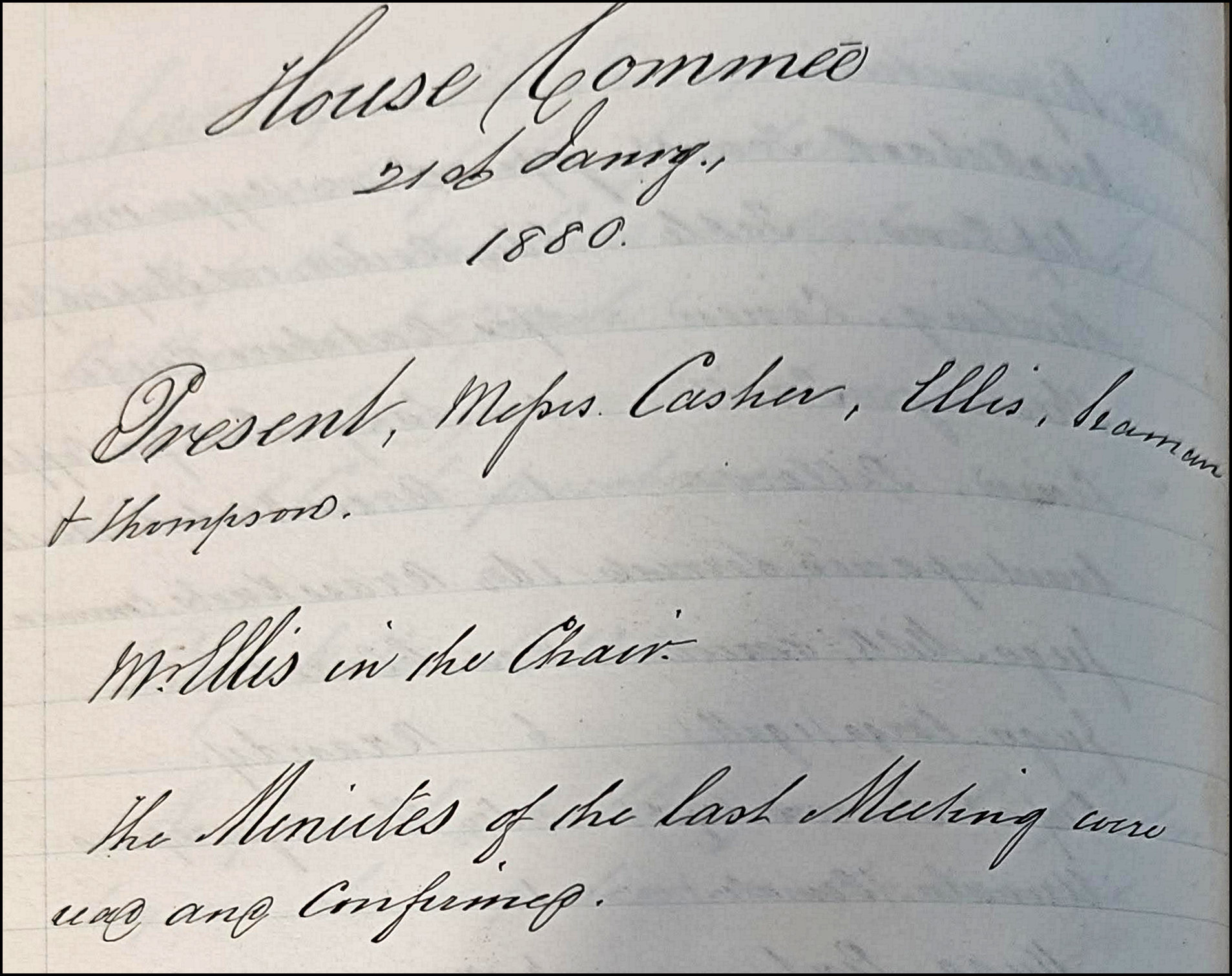
Fig_01: Minutes of the House Committee, 21st of January 1880
To tempt you with our enticing archives, we like to showcase items from our collections. This month, we will look inside the 1880 volume of the Minutes of the House Committee. [1] An old administrative record may seem a rather inauspicious, humdrum choice – but stick with me, I think you’ll be surprised!
We’re going to run through the entry dated the 21st of January 1880. This one stood out for me because it’s considerably longer, more involved than most, and includes both the commonplace – and some unusual – items on the agenda. Not only will we glean something about the institutional life of the patients and staff at what was then the Royal Hospital for Incurables, but we will also gain insight into the concerns and priorities of the House Committee.
Below is an edited transcription of the full entry, in which the patients have been anonymised for good ethical research practice. I’ve interspersed this transcription with some additional research, related images, and other thoughts which I hope you will find interesting.
1. Opening Business and an Eye Operation
“House Commée [Committee]
21st Janry
1880
Mr Ellis in the Chair.
The Minutes of the last Meeting were read and confirmed.
Report of Medical Officer.
Eye Operations. Mrs P. was willing to undergo the removal of the eyes which were a source of extreme pain, and were likely to become worse; there was no danger, and chloroform would be used; Mrs P. had long been totally blind. The operation would be performed by Mr Lawson at the Middlesex Hospital.”
Mrs P. would have been in good hands with George Lawson (1831–1903), F.R.C.S. Early in his career he had served as an army surgeon in the Crimean War, and he was present at several major battles including Alma, Sebastopol, and Balaclava. He was invalided home in 1856, having failed to fully recover his health following a severe attack of typhus fever in the previous year. Just over a hundred years later, the letters he wrote home to his family during the war were published in a volume entitled “Surgeon in the Crimea”. [2]
Back in London, he set himself up in a new medical practice and began to specialise in ophthalmic surgery. In the 1860s, he was elected Assistant Surgeon (and was later appointed full Surgeon) to the Royal London Ophthalmic Hospital, Moorfields.
At the same time, he was doing similar work at the Middlesex Hospital. In 1878 he was elected Lecturer on Surgery there, and he eventually rose to the grand position of Consulting Surgeon. [3]
In 1886, he was appointed Surgeon-Oculist to Queen Victoria. According to Lawson’s obituary in the British Medical Journal, when in 1891 the Queen’s son-in-law Prince Christian of Schleswig-Holstein “met with a serious accident to his eye while out shooting, it was Mr. Lawson whose services were requisitioned and obtained”. [4] What we don’t learn from the obituary, is that the wounding shot was almost certainly fired by the Queen’s own son the Duke of Connaught.
Lawson examined the eye and declared it beyond repair. He recommended its removal to prevent any danger to the other eye, which had sustained minor damage. A horrified Queen Victoria eventually consented, and the operation – carried out by Lawson himself – was a success. Having been fitted with his first glass eye, Prince Christian became enamoured with them. He amassed a large collection of them, which he became notorious for getting out to show to his guests at dinner parties. [5]
The obituary continues: “as a general surgeon Lawson was both courageous and painstaking: fearless in undertaking any operation, however formidable, if in his sound and sagacious judgement he had satisfied himself of its wisdom and justification.” [6]
It was at George Lawson’s suggestion that a dedicated Chapel was built at Middlesex Hospital in the early 1890s. This survived the closing of the Hospital in 2005; the demolition of most of its buildings in 2009; and the subsequent redevelopment of the site into homes, shops, and restaurants, now known as Fitzroy Place.
Today, the Chapel is Grade II* listed and beautifully restored, and it regularly opens its doors to visitors.
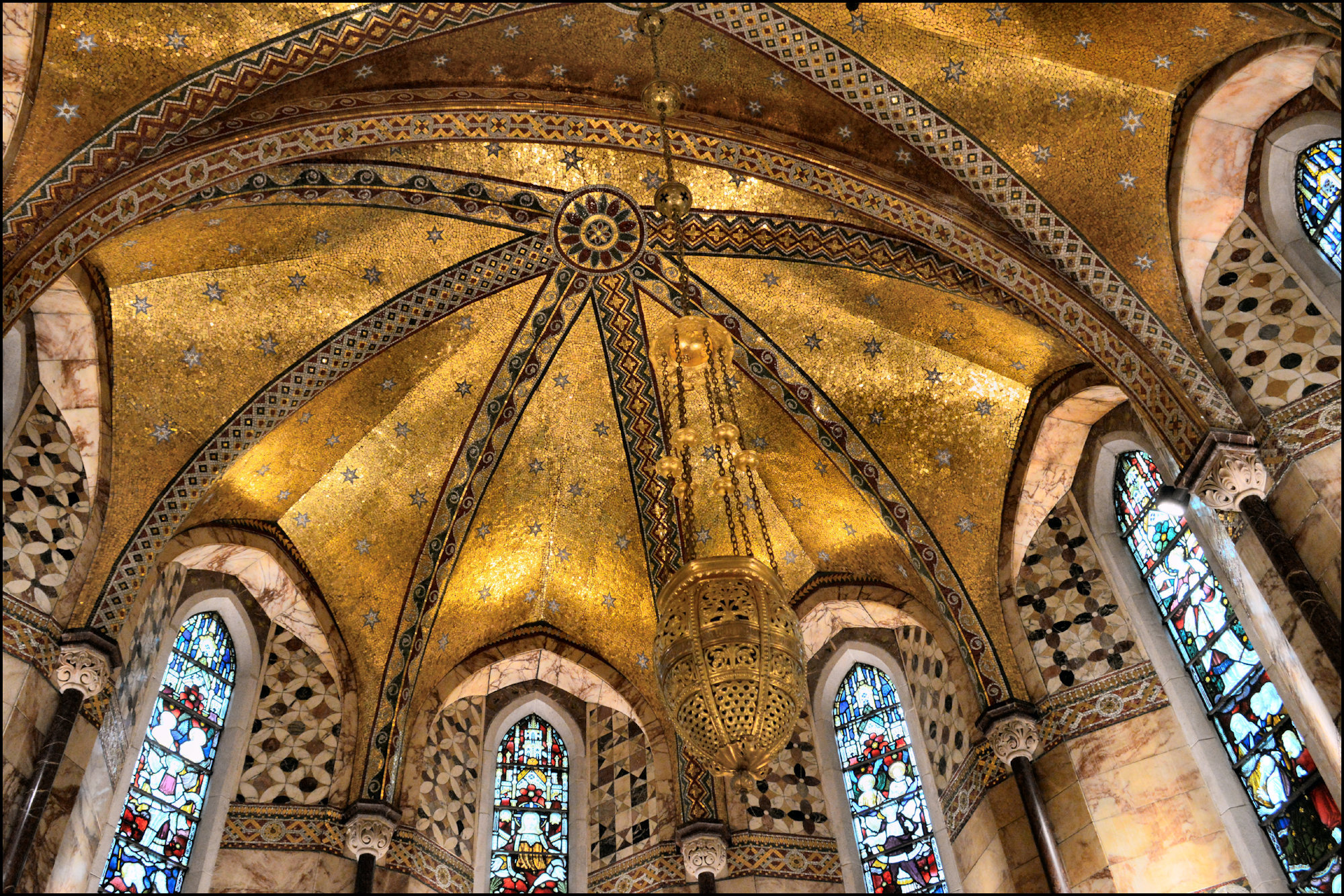 Fitzrovia Chapel
Fitzrovia ChapelFig_02: The Chancel ceiling of the Fitzrovia Chapel
2. Disturbances on the Ward and the Royal Hand Bell Ringers
“Report of Visitors.
Mr Casher reported that four Members attended last week, and visited a large number of Inmates. The report was very satisfactory.
The Staff Gate Book was examined, & signed by the Chairman.
Case of Miss G.
The Secy. [secretary] reported that, on Friday last, he made inquiry of the Inmates who were alleged to have suffered from the noisy and violent behaviour of Miss G. Three were questioned in the presence of the Matron, viz. Miss R., Miss A., and Miss H.
Miss R., who was advanced in years, was unwilling to complain, but had evidently suffered much annoyance. Miss A., who was blind, had been seriously alarmed and distressed; Miss H. was bed-ridden and occupied a Contiguous room, was greatly disturbed and thrown into a state of terror by the outbreaks of Miss G. who came out of her room, and filled the corridor with the noise of her shouting.
He had also seen Miss G.’s Nurse, Midhurst, who confirmed the report of the abusive language and offensive epithets with which she had been assailed by Miss G. in her paroxysms of excitement.
Miss R., Inmate.
Secy. reported that he had visited Miss R. in company with the Matron, and found that she was suffering from delusions. She maintained that there was always a man on the balcony adjoining her room, hallooing, and that he drove away her brother whenever he came to visit her.
A letter, prepared to be sent to Miss R.’s brother, at the request of the Commée, informing him of her state, and intimating that her removal might be necessary, was approved, and ordered to be forwarded.”
The outmoded language here is wonderfully evocative: “offensive epithets” and “paroxysms of excitement” – and the mysterious apparition of a man “hallooing” on a balcony. It’s also worth noting the use of the word ‘inmate’, rather than ‘patient’ or ‘resident’ (as would be today).
As a historical researcher, I’m passionate about uncovering lost stories, and I’m certainly intrigued by these two cases of Miss G. and Miss R. What had caused Miss G. to be “noisy and violent”, and what happened to her following this outburst? Similarly, what happened next to Miss R.? The answers may yet lie in our archives for another day – and if I find them, I will certainly share them with you.
“Hand Bell Ringers.
It was agreed, as proposed by the friends who had secured the entertainment, to fix Monday, 2nd Feby. at 3, to receive Mr Duncan Miller and his party composing the Royal Hand Bell Ringers. Invitations to be sent out.”
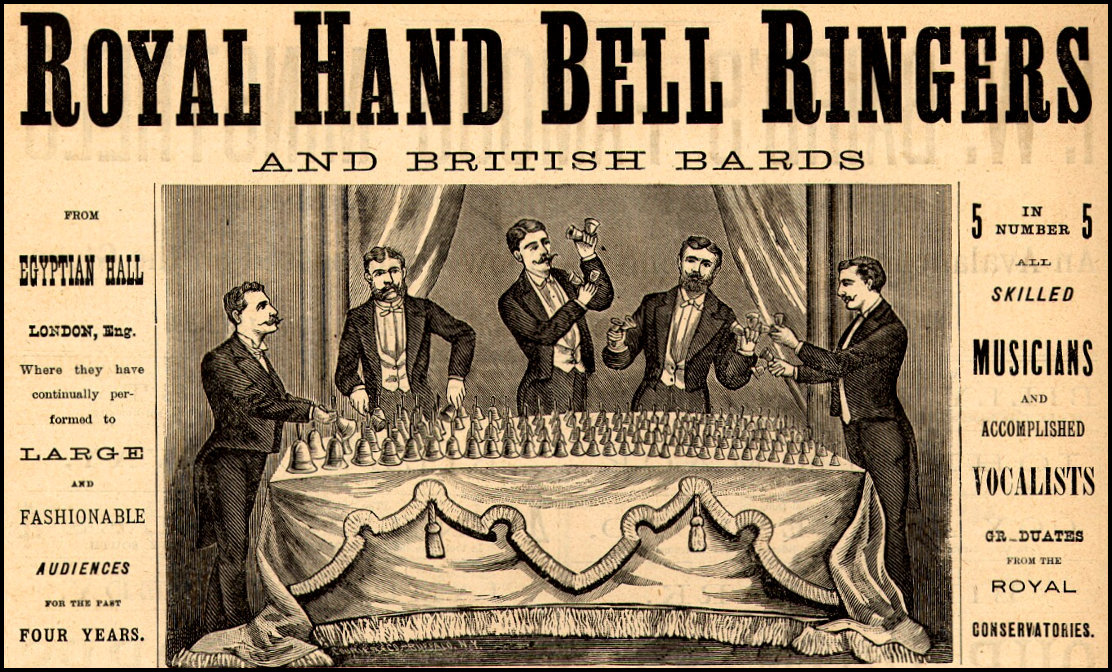
Fig_03: Advertisement for the Royal Hand Bell Ringers
3. The Laundry Boiler
“Laundry Boiler.
Mr Hayes reported that the Laundry Boiler has been examined by Messrs Easton & Anderson’s Engineer, Mr Hallett, who said that the draught had not been impaired by the removal of the steam pipe from the chimney, and that the chimney was sufficient for the purposes of draught. The complaint of the Engineer, Knight, had, therefore, no foundation.”
In 1822, James Easton (1796-1871) founded his first company and began to manufacture hydraulic rams. He soon expanded into partnerships, producing a range of steam powered and other equipment for mills, and later specialising in steam powered Grasshopper beam engines. [7]
In 1843, Easton was consulted about how to supply water at pressure to the new fountains in Trafalgar Square. Designed by Sir Charles Barry, these original fountains were made of Peterhead Granite, a hardy red stone which could be brought to a high polish.
Easton proposed the sinking of two artesian wells to provide water to the pumping engines which would then feed the fountains. His designs were so successful that “the flow of water proved to be much beyond the stipulated quantity and was sufficient not only to keep up the fountains, but to supply many of the public establishments in the neighbourhood.” [8]
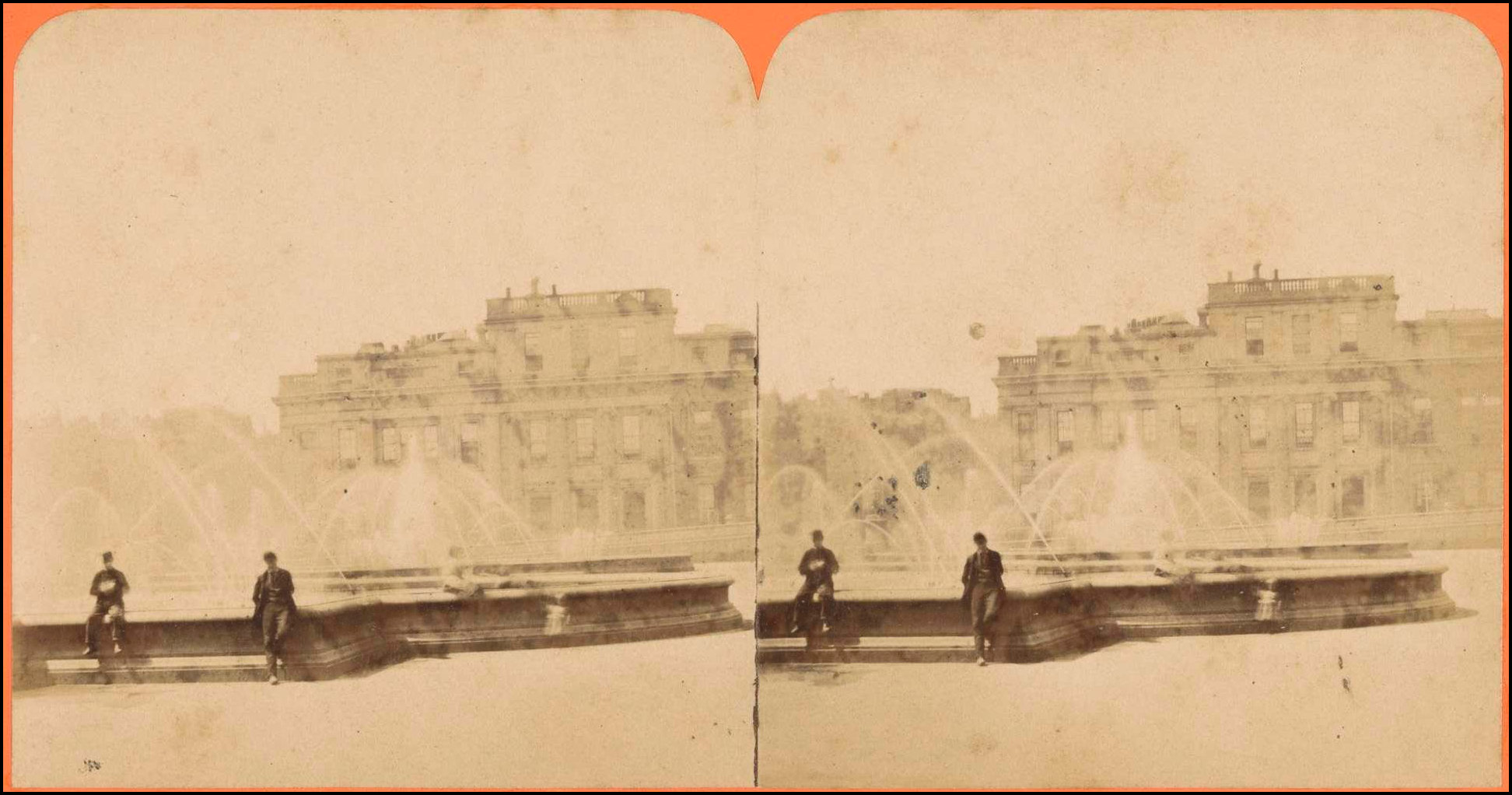
Fig_04: Stereoscopic photograph of Trafalgar Square fountain, c.1850-1890
The pumping system was entirely replaced in the mid-nineteenth century, as were the granite fountains seated within the original quatrefoil basins. Barry’s two nineteenth century fountains survive, and they now stand in public spaces in Regina and Ottawa in Canada. [9]
According to his obituary, “Mr. Easton’s character was, in many ways, remarkable. He was endowed with singular simplicity of purpose, and great power of judgement in discriminating truth… He disdained to use the acts and manoeuvres by which men often seek to attain their ends, believing that the simple and honest course would be sure to triumph in the end.”
“Among men he was distinguished for the sympathy he always evinced towards them, and for the timely aid he was ever ready to give. His last illness was a case of blood poisoning caused by his breathing foul air of an ill-drained cottage whilst endeavouring to persuade the inmates to adopt more healthy and cleanly habits.” [10] The partnership of Easton & Anderson was established, after James Easton’s death, under the administration of his sons.
A number of Easton & Anderson steam beam engines survive. They can be seen in museums and preserved pumping stations such as the Eastney Beam Engine House in Portsmouth; Bressingham Steam & Gardens in Norfolk; and the British Engineerium in Hove, East Sussex.
The example in the image below was built for Banstead Hospital – opened in 1877 as the Banstead Asylum, located around eight miles south of the RHN – where it powered workshop equipment and the Hospital’s laundry.
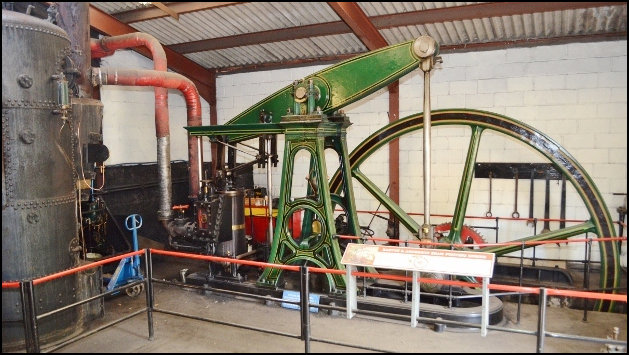
Fig_05: Easton & Anderson Beam Pumping Engine, Bressingham
4. The Matron’s Report and ‘Invalid Chairs’ Required
“The Matron made her Report.
The Body of Miss C., late Inmate, was removed on the 9th last by Mr C., of Hornsey, brother of the deceased.
New Inmate. Miss F., a newly elected Inmate, entered on the 10th.
Presents reported.
I. An out door Invalid Chair from John McH. Esq., Clapham Park.
II. An indoor Invalid Chair from Miss O., Chiswick.
Both have been gratefully acknowledged.
Staff.
Grace L. entered as second (additional) scullerymaid on the 7th.
Ethel W., wardmaid, received notice on the 13th for rudeness.
Elizabeth J. entered as the first additional Nurse on the 13th.
Ruth C., Head Cook, gave notice to leave on the 17th, after a few weeks’ service.
Invalid Chairs required.
The Matron informed the Commée that four of the new patients were very helpless, and needed special chairs. One, Mrs M., had the chair used by the late Miss C. The others were Mr T., Miss R. and Miss F. For the former the last presented chair might perhaps be adopted; a chair of simple construction would suit Miss R.; but Miss F. required one of peculiar construction.
It was agreed to recommend that Mr Ward be asked for an estimate, with a special caution not to incur needless costs.”
John Ward (1845-1903) was a specialist maker of ‘invalid chairs’ working in London in the second half of the nineteenth century. In the London Post Office Directory of 1882, he is listed as a “bath, invalid chair, perambulator maker, chair and sofa maker”. [11] Over his working lifetime, he produced all sorts of different designs for ‘invalid chairs’.
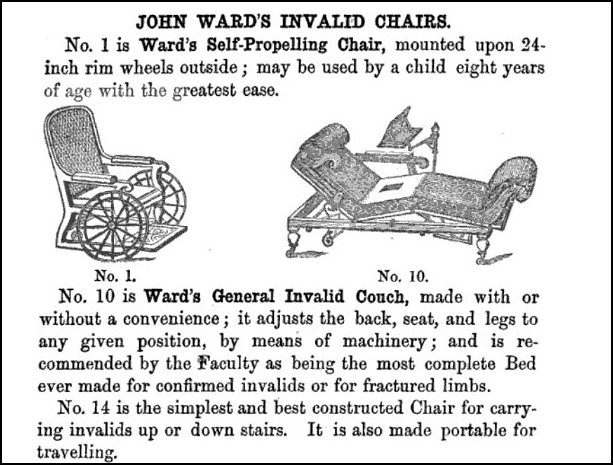
Fig_06: Section of an advertisement for ‘John Ward’s Invalid Chairs’, 1883
The many different chairs made by John Ward provide important historical evidence of the practical ways in which design was in used in the past to accommodate infirmity and disability. The Sir Henry Wellcome’s Museum Collection holds a surviving working example of a ‘Ward’s improved recumbent chair’ in royal blue, which “could be used as armchairs or converted into daybeds for invalids or recovering patients”. [12]
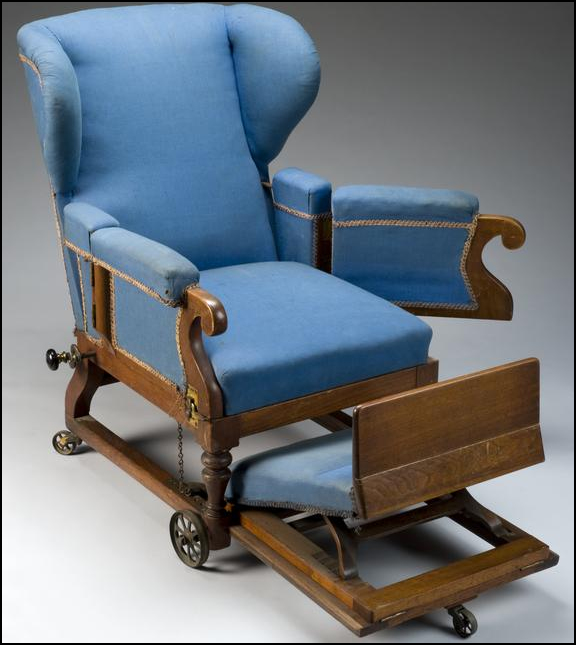
Fig_07: Ward’s Improved Recumbent Chair, London, 1880-1900
The National Trust owns at least two John Ward chairs (a bath chair at Tyntesfield House, and an ‘invalid carriage’ at the National Trust Carriage Museum). [13]
The Beamish Museum owns a simpler ‘Wood and Cane Invalid Chair’ by John Ward. This was conserved in 2019 by the Durham University Conservation Team (D.U.C.T.), in a process which you can read about on their website. [14] We know that other examples of John Ward built chairs also survive because they occasionally come up for auction.
5. Abstinence, Intoxication and Fraternisation
“The Steward made his report.
Mr Thomas H., Inmate, has taken the total abstinence pledge. His conduct was very satisfactory.
Thomas Sheridan, Attendant, came home intoxicated on the morning of the 15th, the Steward having allowed him to be out at night.
It appeared that there were no circumstances to justify this permission.
Sheridan was seen, and informed that a second offence would ensure his dismissal.”
England’s Temperance movement emerged in the 1830s, spearheaded by “middle-class social reformers and philanthropists who wanted to manage an unruly working class… Temperance rhetoric and narratives argued that spending money on alcohol would only lead to one’s own ruin and the ruin of one’s family”. [15]
The movement gained support from Nonconformist Churches, many of which advocated for total abstinence. The ritual of the ‘pledge’ involved publicly confessing one’s past abuses of alcohol and declaring one’s intention to abstain henceforth.
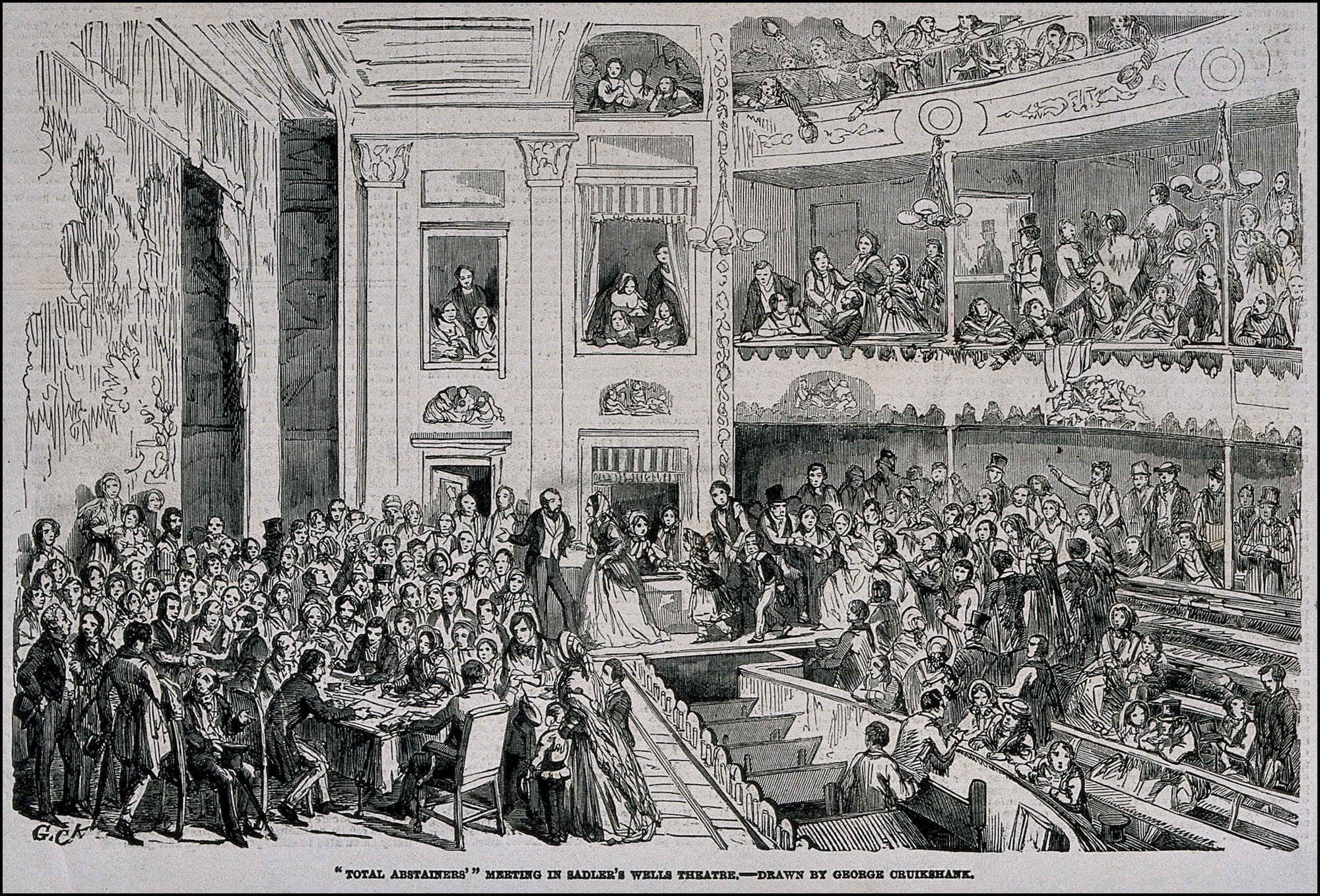
Fig_08: A ‘Total Abstainers’ meeting in Sadler’s Wells Theatre, 1854
“The Head Nurse made her Report.
Thomas Mead, Head Attendant. Matilda Cole, Nurse, appeared before the Commée, and complained that Mead had made a report to the Steward respecting herself that was untrue, to the effect that he had, last evening, seen her walking in Putney with Thompson, the Head Porter, his arm being around her waist. Cole said she did not see Thompson in Putney on the evening in question.
Mead was called in, and gave a circumstantial account of the alleged meeting of Thompson and Cole, and their walking together, as described.
The Steward said that Mead, in reporting the alleged incident, referred to Thompson having, on one occasion, told the Steward of his having seen Mead and Ethel Waterman, a ward maid, together.
Thompson and Cole were, in the presence of Mead, informed of what he had related to the Commée. Thompson said that Cole passed him in Putney last evening; he wished her good night, but she appeared not to see him, and made no reply. Both strongly denied the truth of Mead’s assertion that they were walking together, with his arm round her waist.
Mead also persisted in his statement.
It transpired, in the foregoing inquiry, that Mary Ann Hill, a housemaid, had made statements to some of her fellow servants respecting Thomas Mead.
Mary Ann Hill, being called in, stated that on Monday, she met Mead by arrangement, at about 7:30, outside the gate and that they were out together to 9:30, walking about. On that occasion Mead attempted to commit a criminal act, but did not succeed. She did not report this to the Matron, as Mead appeared sorry.
Mead was called in, and, in the presence of Mary Ann Hill, was informed of her statement. He strongly denied the truth of the charge, when Mary Ann Hill, who seemed greatly distressed said to him “Mead, you did try, you know”.
In the course of the investigation, inquiries were made of Thompson and Emma Ransom, parlour maid, and also of the Matron and Steward.
Mead was informed that the Commée considered the report of his improper conduct to be true, and that he must leave in a month.
The proceedings of the House Committee terminated at 8 o’clock.”
I can’t add anything to the above, but I find it a fascinating tale of intrigue and possible misdeed. The incident was clearly taken very seriously by the House Committee, dealt with openly, and everybody involved was afforded the opportunity to give their side of the story.
I very much hope that you have enjoyed taking this journey with me through an entry in the Minutes of the House Committee of 1880.
Images
Fig_01: RHN Archive. Reference code: GB 3544 RHN-AD-01-04-12; Title: Minutes of the House Committee; Date(s): 1880-1881 (Creation); Level of description: Item; Extent and medium: 1 volume
Fig_02: ‘Fitzrovia Chapel, chancel ceiling 2’ Andy Scott, 2019 Attribution ShareAlike 2.0 Generic (CC BY-SA 2.0) Creative Commons
<https://commons.wikimedia.org/wiki/File:Fitzrovia_Chapel,_chancel_ceiling_2.jpg> [accessed 21/09/2023]
Fig_03: ‘I.W. Baird’s musical album; Let me dream while life shall linger; Send for mother, birdie’s dying’ 1878, Duke University Library Repository Collections & Archives
<https://library.duke.edu/rubenstein/scriptorium/sheetmusic/b/b05/b0587/b0587-6-150dpi.html> [accessed 21/09/2023]
Fig_04: ‘TM0780 : Easton & Anderson Beam Pumping Engine’ Ashley Dace, 2012 Creative Commons Licence
<https://www.geograph.org.uk/photo/3095405> [accessed 21/09/2023]
Fig_05: ‘Fontein op Trafalgar Square in Londen, anonymous, c. 1850 – c. 1880’ Rijksmuseum Public Domain Dedication (CC0 1.0)
<https://www.rijksmuseum.nl/en/collection/RP-F-F05000> [accessed 26/09/2023]
Fig_06: Hugh Owen Thomas, ‘Contributions to Surgery and Medicine Volume 8’ (1883), p.225
Fig_07: Ward’s improved recumbent chair, London, 1880-1900 Sir Henry Wellcome’s Museum Collection Creative Commons Attribution-NonCommercial-ShareAlike 4.0 Licence
<https://collection.sciencemuseumgroup.org.uk/objects/co126914/wards-improved-recumbent-chair-london-1880-1900-invalid-chair> [accessed 26/09/2023]
Fig_08: A well attended meeting of “total abstainers” in the Sadler’s Wells Theatre. Wood engraving, c. 1854, after G. Cruikshank. Wellcome Collection. Public Domain Mark
References
[1] RHN Archive. Reference code: GB 3544 RHN-AD-01-04-12; Title: Minutes of the House Committee; Date(s): 1880-1881 (Creation); Level of description: Item; Extent and medium: 1 volume
[2] ‘Surgeon in the Crimea: the experiences of George Lawson recorded in letters to his family 1854-1855, edited, enlarged and explained by Victor Bonham-Carter and assisted by Monica Lawson’ (CONSTABLE & co LTD. London, 1968)
[3] ‘Plarr’s Lives of the Fellows: Lawson, George (1831 – 1903)’ Royal College of Surgeons of England
[4] ‘Obituary: GEORGE LAWSON, F.R.C.S’ Br Med J 1903; 2: 1019
[5] Tom Hughes, ‘December 26, 1891 — A Shooting Accident’ Victorian Calendar, 2011
<http://victoriancalendar.blogspot.com/2011/12/december-26-1891-shooting-accident.html> [accessed 26/09/2023]
‘The High Steward Of Windsor & Ranger Of Windsor Great Park. Takes One For The Team; The Christmas Tragedy Of Prince Christian Losing His Left Eye!’ The Esoteric Curiosa, 2013
<http://theesotericcuriosa.blogspot.com/2013/11/the-high-steward-of-windsor-ranger-of.html> [accessed 26/09/2023]
[6] ‘Obituary: GEORGE LAWSON, F.R.C.S’ Br Med J 1903; 2: 1019
[7] David Perrett, ‘London and the Steam Engine. Part 2: The Engine Builders’ London’s Industrial Archaeology, p.30
[8] ‘Obituary of Mr. James Easton’ Green & Carter Ltd.
<http://www.greenandcarter.com/main/obituary.htm> [accessed 21/09/2023]
[9] Candy Blackham, ‘The Fountains of Trafalgar Square’ London Traveller, 2013
<https://londontraveller.org/2013/07/16/the-fountains-of-trafalgar-square/> [accessed 26/09/2023]
[10] ‘Obituary of Mr. James Easton’ Green & Carter Ltd.
<http://www.greenandcarter.com/main/obituary.htm> [accessed 21/09/2023]
[11] ‘Ward, John (1845-1903)’ British and Irish Furniture Makers Online, 2022
<https://bifmo.furniturehistorysociety.org/entry/ward-john-1845-1903> [accessed 21/09/2023]
[12] ‘Ward’s improved recumbent chair, London, 1880-1900’ Science Museum Group, COLLECTION: Sir Henry Wellcome’s Museum Collection. OBJECT NUMBER: A602841
<https://collection.sciencemuseumgroup.org.uk/objects/co126914/wards-improved-recumbent-chair-london-1880-1900-invalid-chair> [accessed 21/09/2023]
[13] Bath chair, John Ward National Trust Collections
<https://www.nationaltrustcollections.org.uk/object/10542> [accessed 26/09/2023]
Invalid carriage, John Ward National Trust Collections
<https://www.nationaltrustcollections.org.uk/object/272870.1> [accessed 26/09/2023]
[14] ‘Wood and Cane Invalid Chair’ Durham University D.U.C.T. Tape
<https://duct-tape.webspace.durham.ac.uk/wood-and-cane-invalid-chair/> [accessed 21/09/2023]
[15] ‘Temperance, Teetotalism, and Addiction in the Nineteenth Century’ Susan Zieger, 2022
<https://victorianweb.org/science/addiction/temperance.htm> [accessed 21/09/2023]